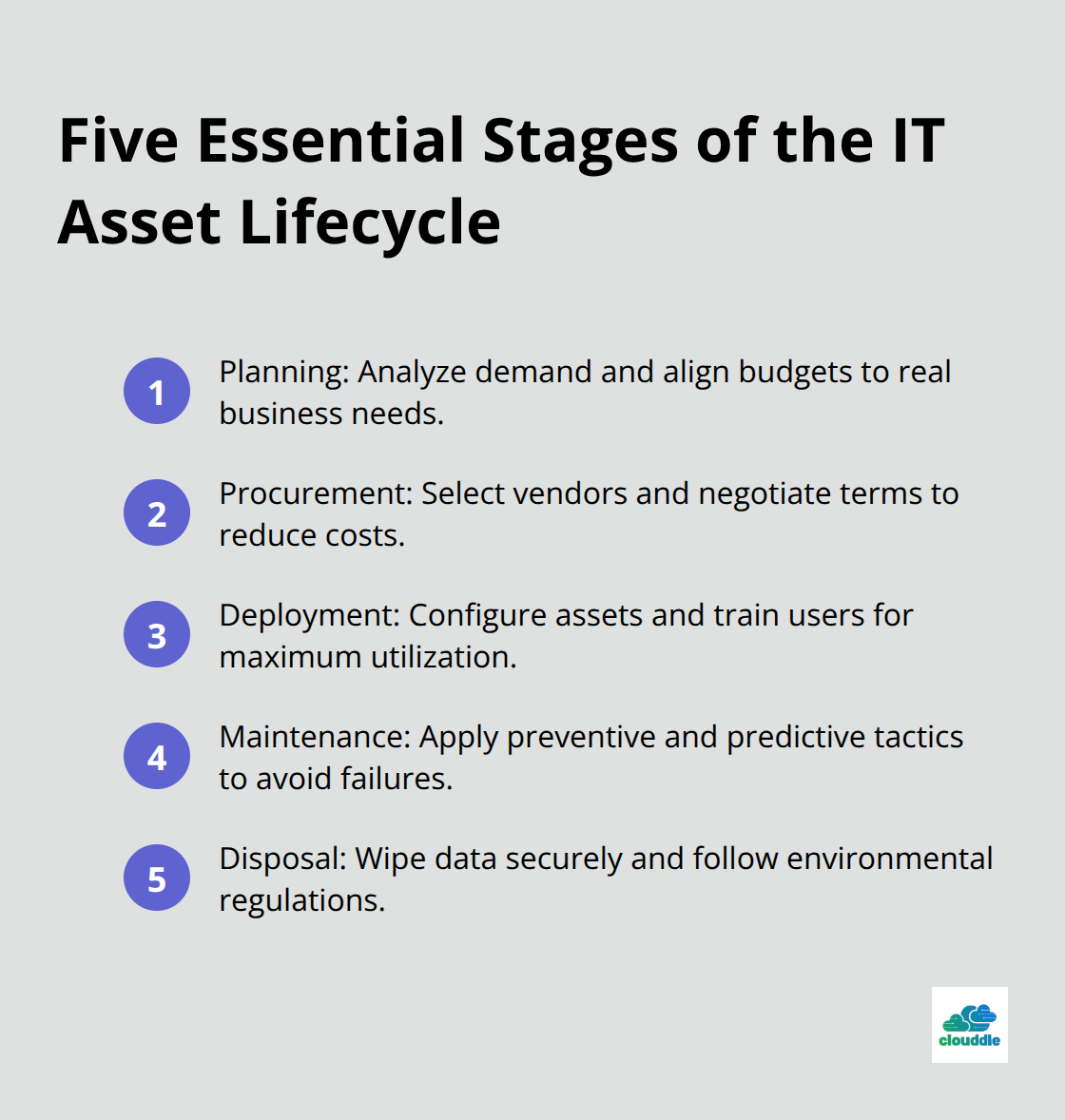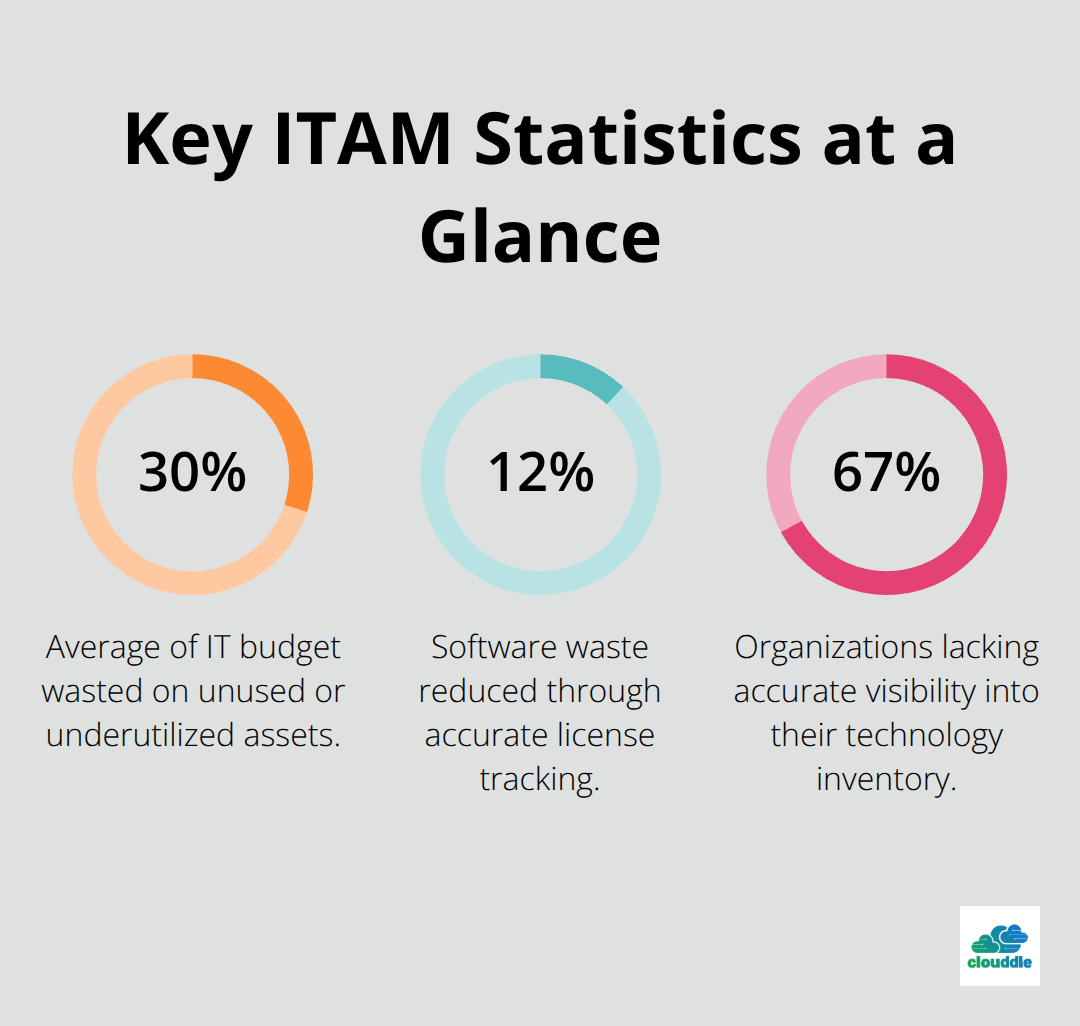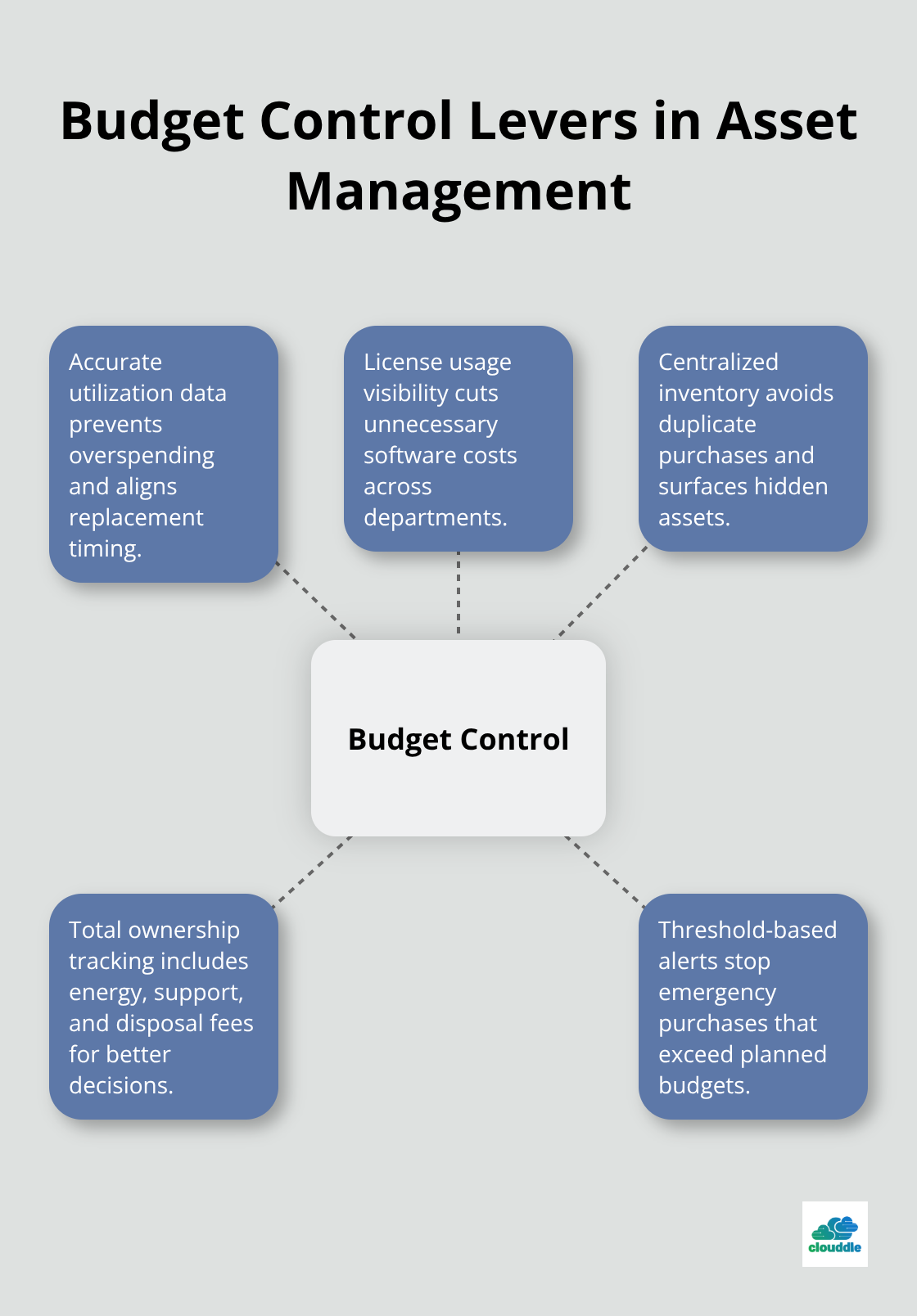IT asset lifecycle management directly impacts your company’s bottom line. Organizations waste an average of 30% of their IT budget on unused or underutilized assets.
We at Clouddle see businesses struggle with tracking hardware from purchase to disposal. Poor asset management leads to compliance failures, security gaps, and unexpected costs that drain resources from strategic initiatives.
What Is IT Asset Lifecycle Management
IT asset lifecycle management represents a systematic approach to track and manage your technology assets from initial planning through final disposal. This process encompasses hardware inventory, software license management, maintenance schedules, and disposal procedures. Companies that use comprehensive asset management software report cost reductions of up to 30% through better license optimization and elimination of redundant purchases.
The Five Essential Stages
The IT asset lifecycle operates through five distinct phases that determine your technology investment success. Planning involves demand analysis and budget allocation based on actual business requirements. Procurement focuses on vendor selection and contract negotiation to secure favorable terms.

Deployment requires configuration management and user training to maximize asset utilization. Maintenance encompasses both preventive and predictive strategies that use IoT sensors and AI analytics to prevent failures. Disposal involves secure data destruction and compliance with environmental regulations to protect sensitive information.
Measurable Financial Impact
Organizations that implement structured asset lifecycle management achieve significant operational improvements. The 2024 State of ITAM Report shows businesses reduce software waste by 12% through accurate license tracking. Companies eliminate ghost assets that typically cost thousands annually when tracked through spreadsheets rather than dedicated management systems. Real-time asset monitoring prevents security breaches that average $220,000 in additional costs (according to compliance studies).

Strategic maintenance planning extends asset lifespans by 15-20%, which reduces premature replacement expenses and improves budget predictability for technology investments.
Technology Integration Benefits
Modern asset management adapts to organizations that embrace DevOps and SRE principles for reliable service delivery. Asset management software automates routine tasks and significantly increases IT team efficiency. Integration with existing platforms enhances employee experience in asset requests and improves visibility for faster resolution of service requests. These technological advances create a foundation for the strategic practices that transform asset management from reactive maintenance to proactive optimization.
How Do You Build Asset Management Excellence
Asset discovery forms the foundation of successful IT management, yet 67% of organizations lack accurate visibility into their technology inventory. Start with automated discovery tools that scan your network infrastructure, identify connected devices, and catalog software installations across all endpoints. These tools detect shadow IT applications that employees install without approval, which typically account for significant software usage in most companies.
Create a centralized Configuration Management Database that captures asset specifications, purchase dates, warranty information, and current locations. Update this database weekly through automated scans rather than manual entry, which introduces errors over time.
Smart Procurement That Prevents Waste
Procurement decisions determine your asset management success for the next 3-5 years. Negotiate enterprise agreements with standardized hardware configurations to reduce support complexity and costs. Research shows companies can achieve significant cost reductions when they limit hardware models to three or fewer variants per device category.
Implement approval workflows that require business justification for new purchases and automatically check existing inventory for available alternatives. Set spending thresholds that trigger additional reviews for purchases above $5,000 to prevent redundant acquisitions. Track vendor performance metrics including delivery times, defect rates, and support responsiveness to guide future decisions.
Performance Monitoring That Predicts Problems
Monitor asset health through IoT sensors and performance analytics that identify issues before they cause downtime. Deploy agents on all critical systems to track CPU utilization, memory consumption, disk space, and network performance in real-time. Set automated alerts when performance metrics exceed 80% of capacity thresholds (this gives teams time to address problems proactively).
Schedule preventive maintenance based on actual usage data rather than arbitrary time intervals, which reduces maintenance costs significantly. Use predictive analytics to forecast when assets will require replacement, which enables budget planning 12-18 months in advance rather than reactive emergency purchases.
Even the best asset management practices face significant obstacles that can derail your technology investments and operational efficiency.
What Breaks Asset Management Systems
Asset Visibility Collapses Across Departments
Asset tracking fails when fragmented systems create information silos across departments. Organizations lose track of their technology assets within the first year of deployment because they rely on manual spreadsheets and disconnected databases. These gaps multiply when remote work increases device distribution beyond traditional office boundaries.
Shadow IT compounds visibility problems as employees install unauthorized software that bypasses central monitoring systems. Real-time asset location becomes impossible when RFID tags fail or GPS tracking lacks integration with core management platforms. Companies discover missing equipment only during annual audits, which creates massive write-offs that damage financial planning and regulatory compliance.
Budget Control Requires Data Accuracy
Financial planning collapses without accurate asset data that reflects true utilization rates and replacement schedules. Organizations overspend on software licenses because they lack visibility into actual usage patterns across departments. Budget overruns occur when IT teams purchase duplicate equipment because existing assets remain hidden in outdated inventory systems.

Maintenance costs spiral when preventive schedules rely on calendar dates rather than performance metrics and usage data. Automated cost tracking captures total ownership expenses (including energy consumption, support contracts, and disposal fees). Set spending alerts at budget thresholds to prevent emergency purchases that cost more than planned acquisitions through IT cost saving strategies.
Security Risks From Poor Asset Control
Compliance failures and security breaches directly result from inadequate asset oversight and disposal procedures. Untracked devices create entry points for cyber attacks because security teams cannot apply patches or monitor access patterns. Data exposure increases when organizations dispose of equipment without certified destruction services that meet regulatory standards.
Non-compliance with software licensing agreements triggers audit penalties according to software vendors. Deploy automated vulnerability scanning across all tracked assets and maintain detailed logs of software installations, updates, and access permissions. Establish mandatory asset retirement procedures that include data wiping verification and disposal documentation to prevent regulatory violations (this protects against both financial penalties and data breaches).
Final Thoughts
IT asset lifecycle management transforms technology from a cost center into a strategic advantage. Organizations that implement comprehensive systems reduce software waste by 12% and eliminate thousands in ghost asset expenses. Real-time monitoring prevents costly security breaches while predictive maintenance extends asset lifespans by 15-20%.
Success demands automated discovery tools, centralized databases, and performance analytics that identify problems before they cause downtime. Companies achieve 30% cost reductions through better license optimization and strategic procurement decisions. The financial impact extends beyond immediate savings to improved budget predictability and regulatory compliance (which protects against both penalties and operational disruptions).
Your implementation should start with accurate asset discovery across all departments, followed by automated systems that track performance metrics in real-time. We at Clouddle provide managed IT services, networking solutions, and 24/7 customer support that create the foundation for successful asset management. Our expertise helps hospitality, multi-family dwelling, and senior living industries build reliable infrastructure that supports comprehensive asset lifecycle management.


